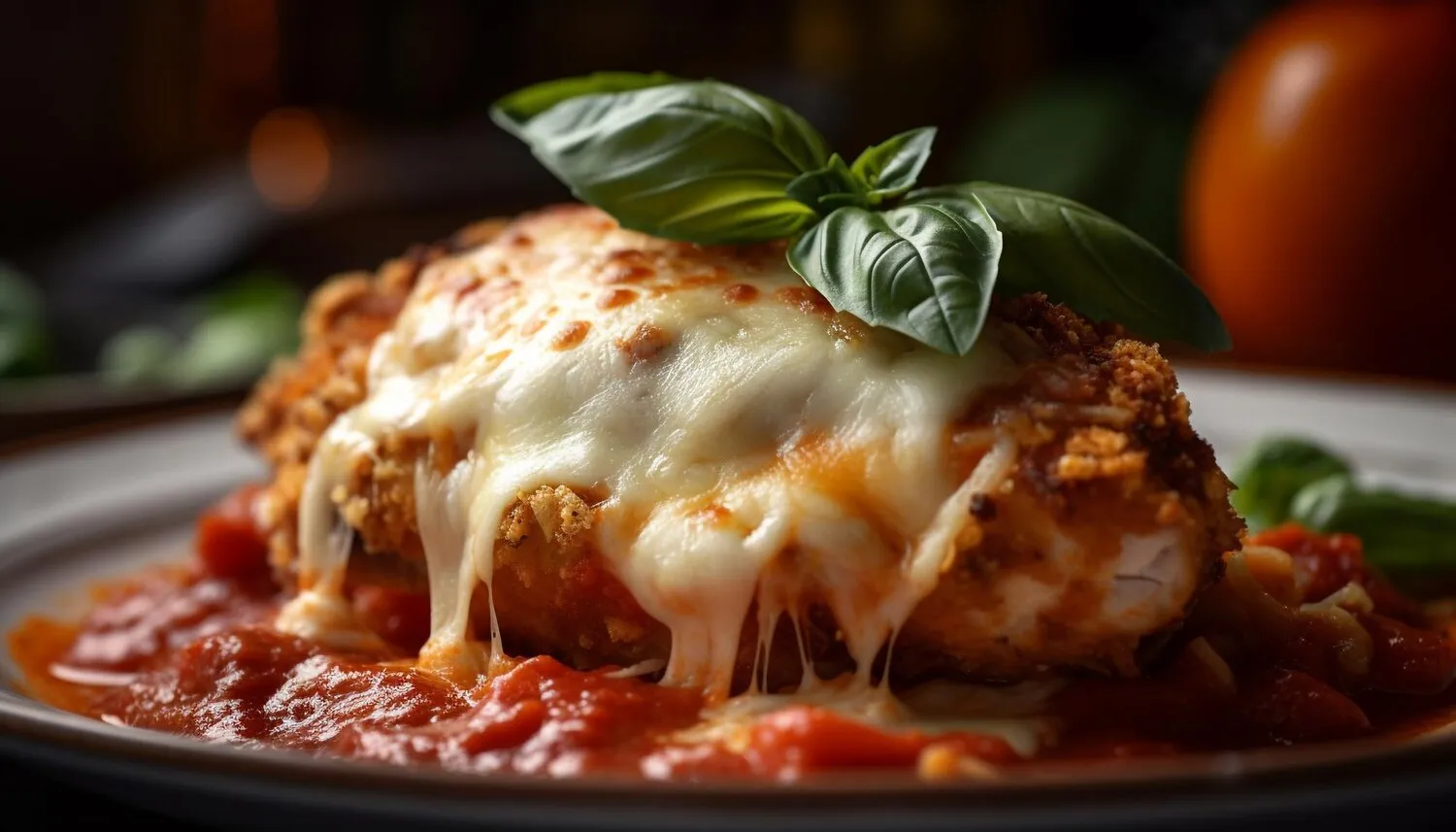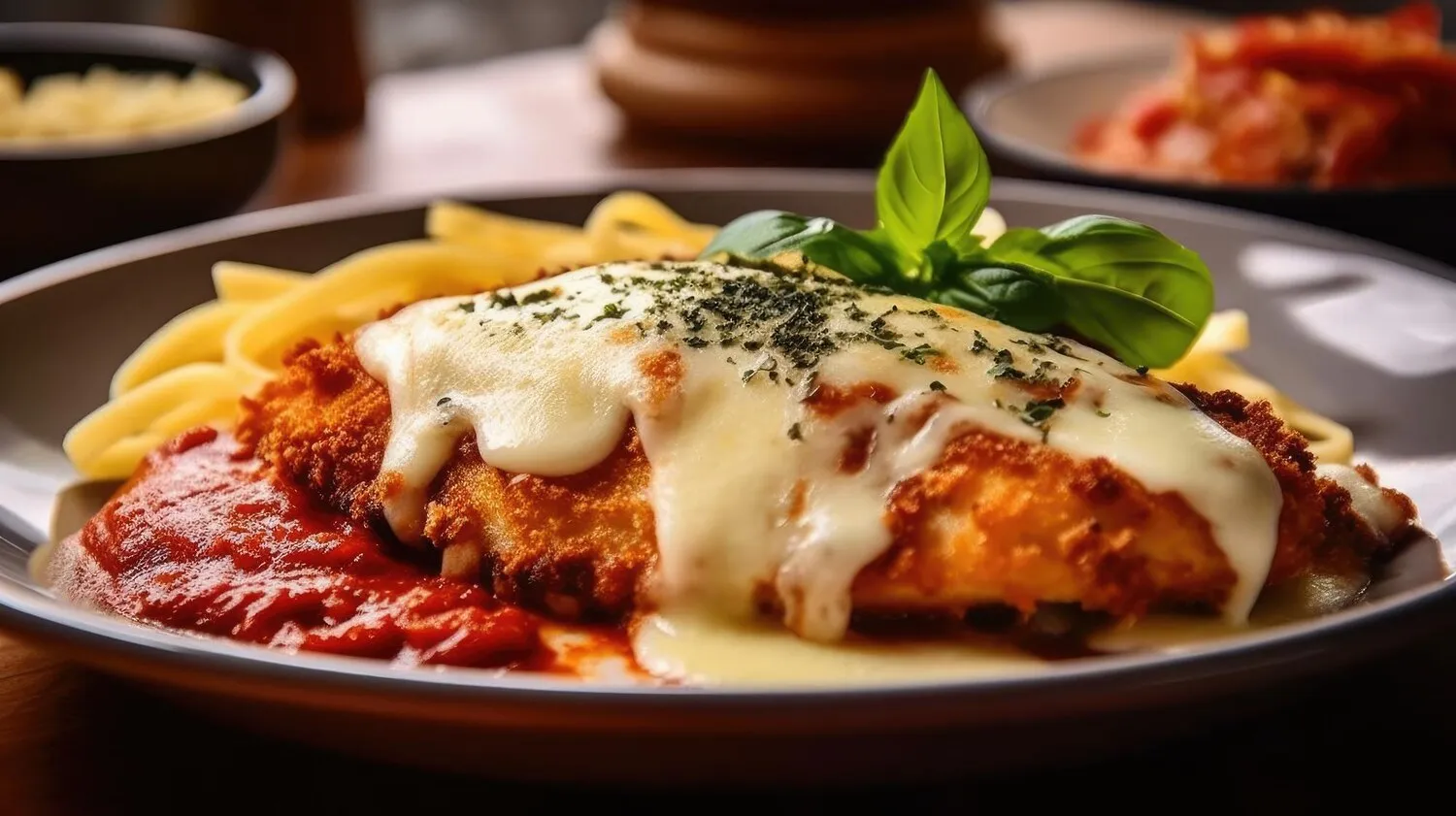
Parmegiana
A classic Parmegiana dish.
Nutrition Facts
* The % Daily Value (DV) tells you how much a nutrient in a serving of food contributes to a daily diet. 2,000 calories a day is used for general nutrition advice.
The exact origins of Parmigiana are debated, with both Campania and Sicily laying claim. Some theories suggest it evolved from the Catalan word 'parmigiana' referring to a louver, possibly influencing the layered construction. Another theory links it to early eggplant dishes popular in the Arab world, which were introduced to Sicily during their rule. The dish's evolution continued through the centuries, incorporating ingredients like tomatoes and mozzarella as they became more widely available.
Parmigiana is a staple of Italian cuisine, particularly in the southern regions. It is often served as a *secondo* (second course) or a *contorno* (side dish), but can also be enjoyed as a satisfying vegetarian main course. The dish holds a significant cultural role as a symbol of Italian home cooking and family meals.
Family Tradition
Parmigiana is often associated with family gatherings and passed-down recipes. Each family may have its own unique variation, reflecting regional ingredients and personal preferences.
Regional Variations
While the core ingredients remain consistent, regional variations exist. Some regions may use different types of eggplant, cheeses, or tomato sauces, leading to subtle differences in flavor and texture.
Vegetarian Staple
Parmigiana is a popular and satisfying vegetarian option in Italian cuisine, offering a hearty and flavorful alternative to meat-based dishes.
Parmigiana boasts a rich and savory flavor profile, driven by the sweet-tangy tomato sauce, creamy melted mozzarella, and slightly bitter eggplant, all balanced by the sharpness of Parmesan cheese and the aromatic freshness of basil.
The primary flavors are defined by the interplay of sweet tomato sauce (traditionally using San Marzano tomatoes or similar), creamy and mild mozzarella cheese, and the slightly bitter and subtly sweet flavor of the eggplant. The Parmigiano-Reggiano cheese adds a salty, nutty, and umami-rich dimension. Fresh basil provides a herbaceous and slightly peppery counterpoint. Depending on the recipe, garlic, oregano, and other herbs may contribute additional layers of flavor.
Eggplant Preparation
Properly preparing the eggplant is crucial. Salting the eggplant slices before cooking helps to draw out excess moisture, preventing a soggy dish. Patting them dry before frying or baking ensures they brown properly. Some cooks prefer to grill the eggplant instead of frying, which reduces the oil content.
Tomato Sauce Quality
Using high-quality tomatoes for the sauce makes a significant difference. San Marzano tomatoes are often considered the best choice for their sweet, low-acid flavor. Simmering the sauce for a sufficient amount of time allows the flavors to meld and deepen.
Cheese Selection
Fresh mozzarella is preferred for its creamy texture and mild flavor. Fior di latte mozzarella is a good choice. High-quality Parmigiano-Reggiano adds a sharp, nutty, and complex flavor. Grating the cheese fresh is always recommended.
Layering Technique
Layering the ingredients evenly ensures that each bite contains a balanced combination of flavors and textures. Starting and ending with a layer of sauce helps to prevent the Parmigiana from drying out.
Resting Time
Allowing the Parmigiana to rest for at least 15-20 minutes after baking allows the flavors to meld and the dish to firm up, making it easier to slice and serve.
Explore additional Classic dish dishes and restaurants
Explore Classic dishDiscover top dining spots and culinary experiences in Rio Claro.
Explore Rio ClaroLearn more about the food culture, restaurant scene, and culinary heritage of Brazil.
Explore Brazil
